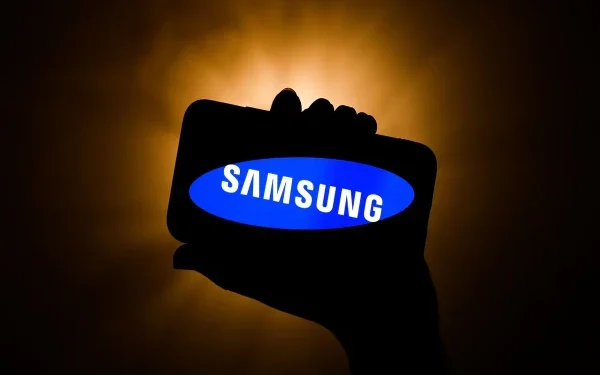Introduction: A Global Electronics Giant Faces Tariff Pressures
Samsung Electronics, the world-renowned South Korean technology conglomerate, has issued a cautionary statement regarding potential disruptions caused by U.S. trade tariffs. The company, known for its extensive range of products including smartphones, semiconductors, and consumer electronics, emphasized that U.S. tariff policies could significantly dampen consumer demand for its products in key markets. This warning was included in Samsung’s latest quarterly earnings report, which offered insight into the company’s financial performance and forecast for the rest of the fiscal year.
Quarterly Earnings Snapshot: A Mixed Bag of Growth and Uncertainty
In its financial report released for the quarter ending March 31, Samsung announced revenues amounting to £41.6 billion (approximately $52 billion). The company also reported a 1.5% increase in operating profit, a modest improvement reflective of a recovering global tech sector.
This growth is attributed to increased orders and consumer demand for Samsung’s flagship devices, including the Galaxy S series smartphones and premium household electronics. Additionally, the semiconductor division, which supplies memory chips to major clients including Apple and various cloud service providers, continued to show resilience.
However, despite the earnings growth, Samsung executives expressed serious concern about the global trade environment, particularly the implications of U.S. tariff strategies on the company’s future operations and international demand.
US Tariff Policy: A Looming Threat to Global Tech Supply Chains
The warning comes amid renewed concerns over the U.S. administration’s aggressive tariff stance toward several Asian countries, including China, Vietnam, and South Korea. The current administration, led by President Donald Trump, has made multiple adjustments to tariff schedules as part of broader efforts to rebalance trade and protect American manufacturing.
While the White House temporarily postponed the implementation of some tariffs, uncertainty remains high. Companies like Samsung are finding it increasingly difficult to plan production schedules, manage supply chains, and forecast consumer behavior in light of these potential trade barriers.
“We are experiencing instability in global trade due to continued shifts in U.S. tariff policies,” a Samsung official stated. “While early orders from customers have been beneficial for our Q1 results, we foresee a significant risk of demand reduction in the latter half of the year.”
Geopolitical Ramifications and Global Manufacturing Hubs
Samsung manufactures a significant portion of its products in Vietnam and South Korea, both of which could be affected by new or reinstated U.S. tariffs. The company’s Vietnamese facilities are crucial for the assembly of smartphones and consumer electronics, while South Korea remains the nerve center for chip production and display manufacturing.
In a globalized economy, any disruption in the cross-border flow of goods can have cascading effects on production and pricing. U.S. tariffs would likely lead to costlier imports, which in turn could discourage consumers from purchasing Samsung products in the U.S. and other tariff-impacted regions.
Early Orders and Inventory Build-up: A Double-Edged Sword
According to the quarterly report, Samsung noted an uptick in early bulk orders from retailers and suppliers attempting to stock up before any new tariffs come into effect. While this strategy has temporarily boosted revenue, it also creates challenges for inventory management and can distort true demand metrics.
“Bulk buying in anticipation of higher tariffs means that the second half of 2025 may witness a slowdown in new orders,” said a Samsung supply chain executive. “If tariffs are enforced mid-year, it may also lead to price inflation, reducing competitiveness in markets like North America and Europe.”
Semiconductor Market Pressures: A Broader Industry Concern
Samsung’s semiconductor business, often considered the backbone of its revenue stream, is particularly vulnerable to trade disruptions. As a major supplier of memory chips and processors, any decline in demand or increase in export costs could severely impact profitability.
Moreover, the semiconductor industry is already facing a complex landscape due to fluctuating demand, geopolitical tensions, and increased scrutiny on data security and technological sovereignty.
Industry-Wide Implications and Competitor Strategies
Samsung is not alone in facing the heat from trade policy changes. Other global tech giants such as Apple, Huawei, and Sony are also bracing for possible disruptions in supply chains and international market access.
While some firms are exploring alternative manufacturing locations to bypass U.S. tariffs, shifting production facilities is neither simple nor cost-effective in the short term. Samsung, like many of its peers, has invested billions in its existing infrastructure, making rapid strategic pivots challenging.
Consumer Impact and Market Forecast
From a consumer standpoint, tariffs can translate into higher prices for smartphones, televisions, and other electronic devices. As input costs rise due to tariffs on components or assembled goods, these expenses are often passed down to the end-users.
This pricing pressure may weaken consumer sentiment and reduce sales volumes, particularly in price-sensitive markets. Industry analysts warn that a prolonged trade dispute could lead to a contraction in global electronics demand.
Conclusion: Strategic Adaptation and Outlook for the Future
While Samsung has demonstrated resilience and adaptability in the face of global economic challenges, the specter of U.S. tariffs remains a significant concern. The company’s ability to navigate these headwinds will depend on its flexibility in supply chain management, geopolitical strategy, and product pricing models.
Going forward, Samsung is expected to continue lobbying for clearer trade policies and may accelerate diversification in its manufacturing footprint. The company has already hinted at expanding operations in other regions, including India and Eastern Europe, to hedge against future tariff risks.
For now, stakeholders, consumers, and investors will closely watch how the ongoing trade dynamics unfold, and how companies like Samsung respond to maintain their competitive edge in an increasingly unpredictable global market.

























